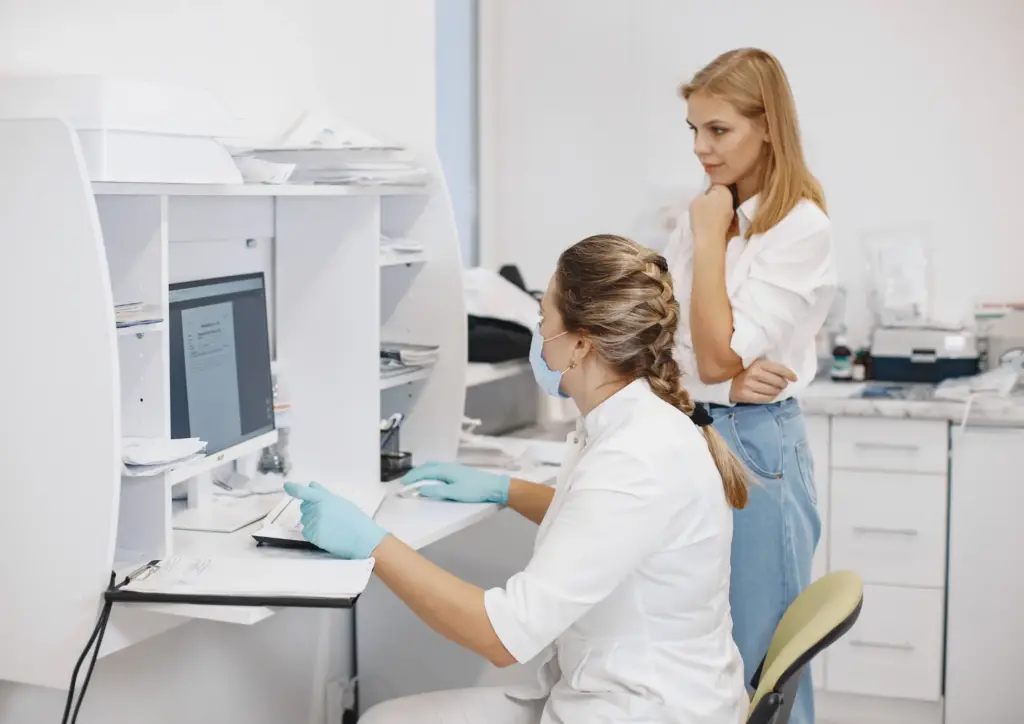Effective communication with Spanish-speaking patients is vital in providing high-quality healthcare. One important term you may need to use is “screening.” In Spanish, there are two commonly used words for screening: “tamizaje” and “detección.” This blog post will explain these terms, provide examples, and help you incorporate them into your patient interactions.
Understanding “Screening” in Spanish
- Tamizaje
- Meaning: This term is commonly used in medical contexts to refer to screening processes, particularly in preventive healthcare.
- Example: El tamizaje neonatal es esencial para detectar enfermedades congénitas.
- (Neonatal screening is essential for detecting congenital diseases.)
- Detección
- Meaning: This term also means screening and is used to describe the detection of diseases or conditions, often in broader contexts.
- Example: La detección temprana del cáncer puede salvar vidas.
- (Early cancer screening can save lives.)
Using “Tamizaje” and “Detección” in Context
Here are examples of how to use these terms in different healthcare settings:
Using “Tamizaje” (Screening)
- Neonatal Screening: Tamizaje Neonatal
- Example: Es importante realizar el tamizaje neonatal en las primeras 48 horas de vida del bebé.
- (It is important to perform neonatal screening within the first 48 hours of the baby’s life.)
- Example: Es importante realizar el tamizaje neonatal en las primeras 48 horas de vida del bebé.
- Diabetes Screening: Tamizaje de Diabetes
- Example: Se recomienda el tamizaje de diabetes para personas mayores de 45 años.
- (Diabetes screening is recommended for people over 45 years old.)
- Example: Se recomienda el tamizaje de diabetes para personas mayores de 45 años.
- HIV Screening: Tamizaje de VIH
- Example: El tamizaje de VIH es una medida preventiva clave en la salud pública.
- (HIV screening is a key preventive measure in public health.)
- Example: El tamizaje de VIH es una medida preventiva clave en la salud pública.
Using “Detección” (Screening/Detection)
- Early Detection of Cancer: Detección Temprana del Cáncer
- Example: La detección temprana del cáncer de mama puede aumentar las tasas de supervivencia.
- (Early detection of breast cancer can increase survival rates.)
- Example: La detección temprana del cáncer de mama puede aumentar las tasas de supervivencia.
- Detection of Infectious Diseases: Detección de Enfermedades Infecciosas
- Example: La detección de enfermedades infecciosas es crucial para controlar su propagación.
- (Detection of infectious diseases is crucial for controlling their spread.)
- Example: La detección de enfermedades infecciosas es crucial para controlar su propagación.
- Screening for Mental Health Issues: Detección de Problemas de Salud Mental
- Example: La detección de problemas de salud mental en adolescentes es fundamental.
- (Screening for mental health issues in adolescents is essential.)
- Example: La detección de problemas de salud mental en adolescentes es fundamental.
Choosing the Right Term
Both “tamizaje” and “detección” are correct, but their usage can depend on the specific context and regional preferences. Here are some guidelines to help you choose the right term:
- Use “tamizaje” for more formal, clinical, and preventive screening contexts, especially in neonatology, chronic diseases, and infectious diseases.
- Use “detección” for broader, more general contexts where you are discussing the discovery or identification of conditions or diseases, including early detection and public health screening.
Knowing how to say “screening” in Spanish is essential for healthcare professionals working with Spanish-speaking patients. The terms “tamizaje” and “detección” both translate to “screening” and can be used in various medical contexts. By understanding these terms and using them correctly, you can enhance your communication with patients and provide better care.




